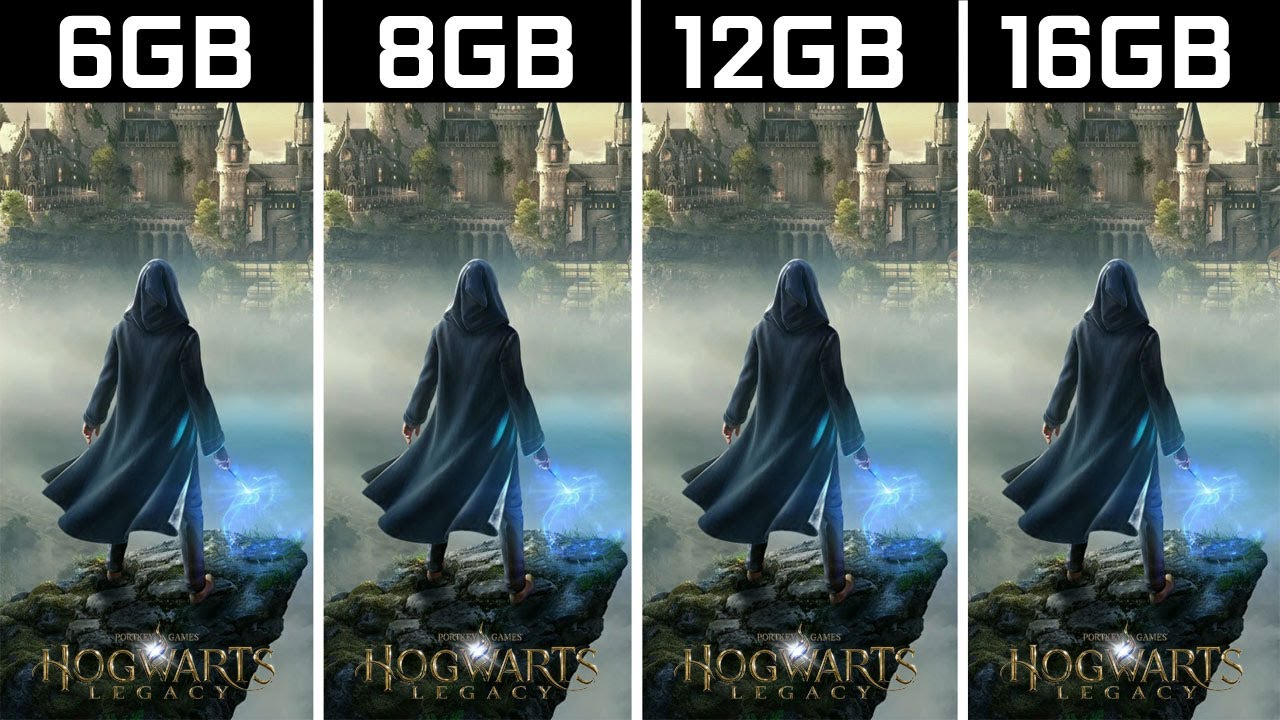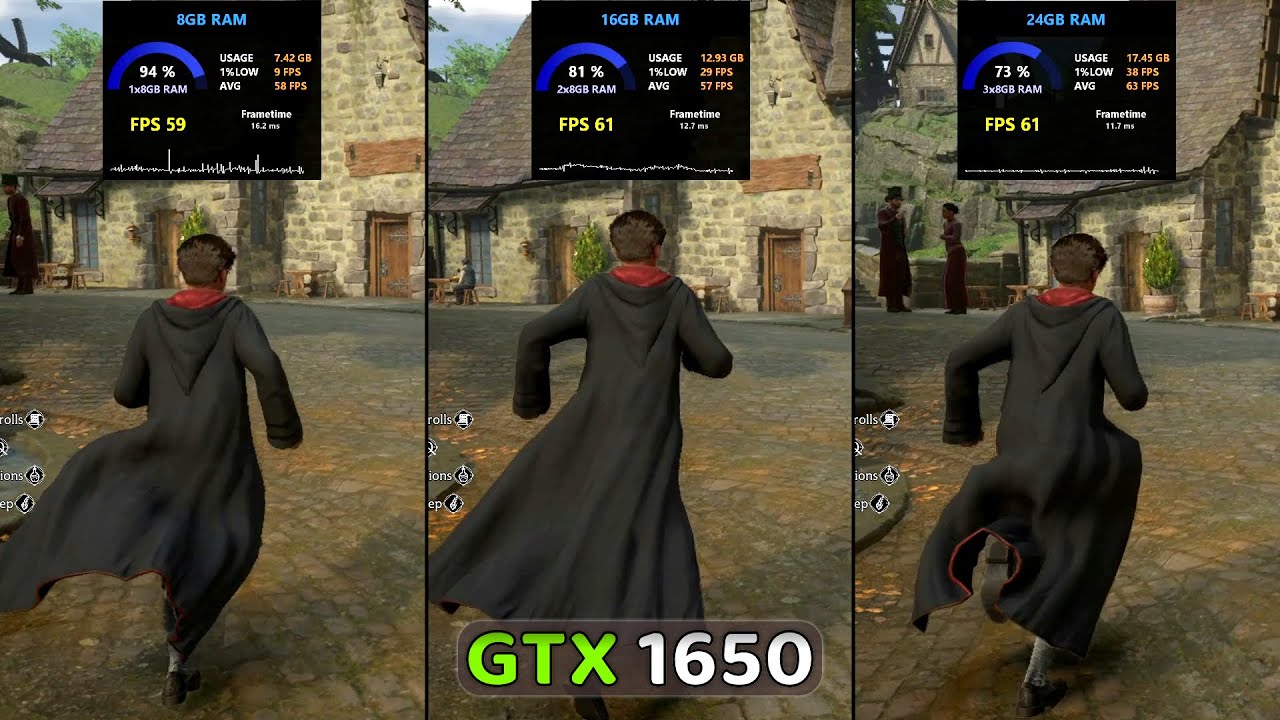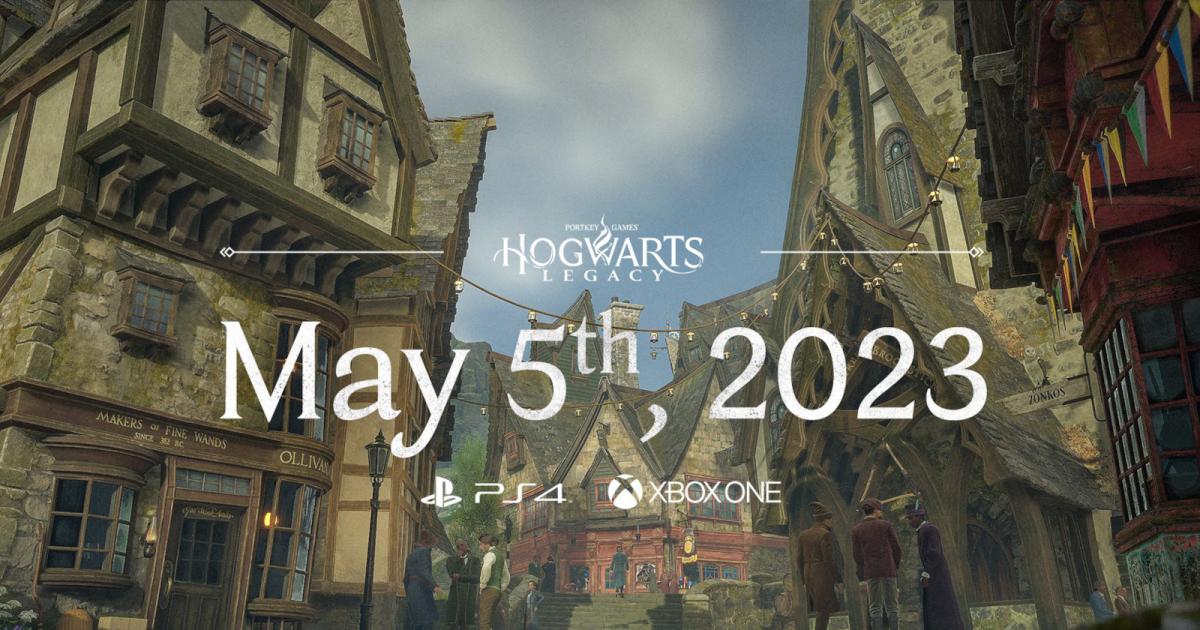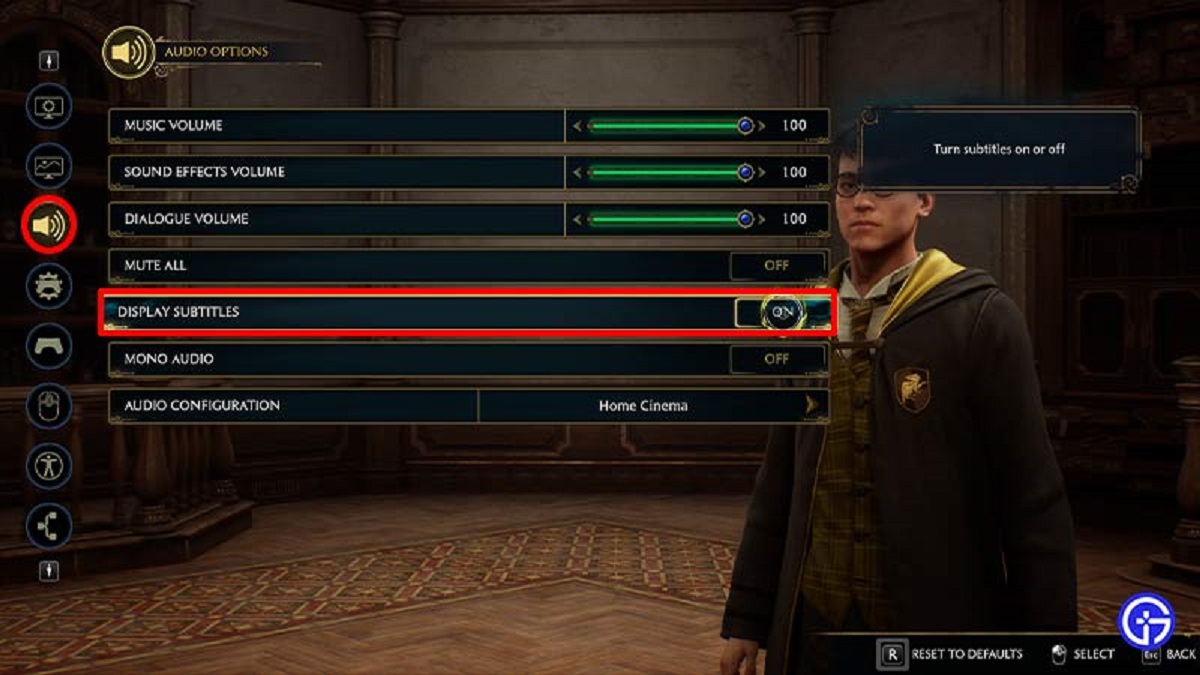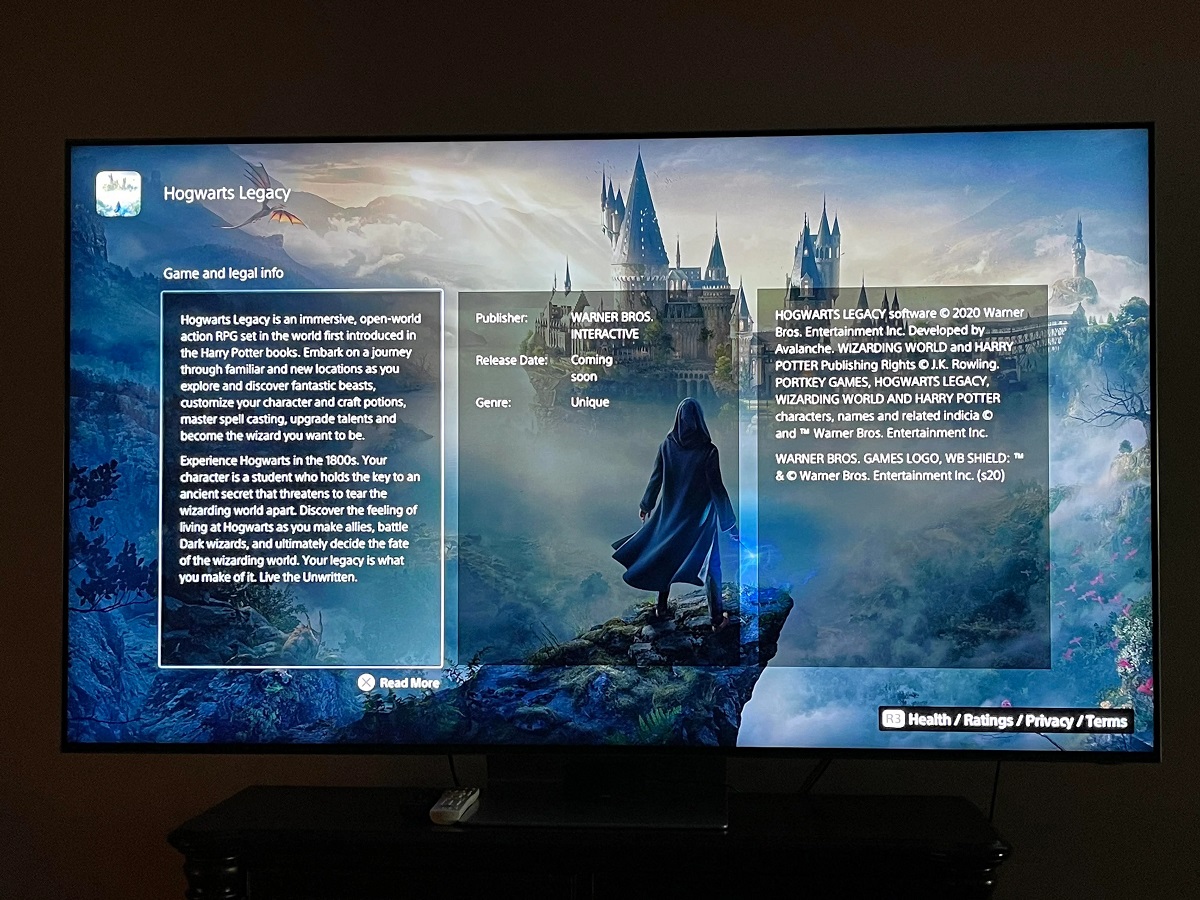Introduction
Welcome to the magical world of Hogwarts Legacy! This highly anticipated action role-playing game takes players on a thrilling journey through the beloved universe created by J.K. Rowling. As you embark on your adventure as a student attending Hogwarts School of Witchcraft and Wizardry, you’ll encounter captivating stories, engaging gameplay, and stunning visuals that bring the magic to life.
But one question that arises among gamers is: why does Hogwarts Legacy use so much RAM? To understand this, we need to delve into the intricacies of RAM and its significance in gaming. RAM, or Random Access Memory, plays a crucial role in the performance of any computer system, including gaming consoles and PC games.
When running a game, the system needs to load various assets, including textures, character models, environment details, and sound effects, into the memory to ensure smooth and seamless gameplay. The greater the amount of RAM available, the more data can be stored and accessed quickly by the game.
Hogwarts Legacy, being a visually stunning and highly immersive game, requires substantial RAM to support its intricate gameplay mechanics and breathtaking graphics. The developers have aimed to create a truly immersive experience where players can explore the magical Hogwarts Castle and its surrounding grounds, interact with a vibrant cast of characters, and engage in epic battles against fantastical creatures.
To deliver such an immersive experience, Hogwarts Legacy employs various memory-intensive features, such as high-resolution textures, detailed environments, real-time physics simulations, and dynamic lighting effects. These elements contribute to creating a visually captivating world that draws players into the magical realm of Hogwarts and makes them feel like they are a part of the story.
Additionally, the game’s ambitious open-world structure, which allows for exploration of diverse locations within the Wizarding World, requires ample RAM to store and render the vast amount of data required for seamless transitions and immersive gameplay.
Despite the game’s need for significant RAM resources, the developers have put in extensive efforts to optimize the game’s performance. Through various optimization techniques, including efficient asset loading, intelligent memory management, and minimizing redundant data, the developers aim to ensure that Hogwarts Legacy runs smoothly on a wide range of hardware configurations.
As players eagerly await the release of Hogwarts Legacy, it is important to understand the technical requirements of the game and why it utilizes a considerable amount of RAM. By doing so, players can make informed decisions about their gaming setups and ensure they have the necessary hardware to fully experience the magic and wonder that Hogwarts Legacy has to offer.
Understanding RAM
Before we delve into why Hogwarts Legacy utilizes a significant amount of RAM, let’s take a moment to understand what RAM actually is and its role in a computer system.
RAM, or Random Access Memory, is a type of computer memory that provides a temporary storage space for data that is actively being used by the system. Unlike the permanent storage provided by hard drives or solid-state drives, RAM allows for quick and direct access to data, making it an essential component for ensuring smooth and efficient system performance.
When it comes to gaming, RAM plays a crucial role in storing and accessing various assets required by the game in real-time. This includes textures, character models, audio files, scripts, and other essential elements that make up the gaming experience.
Imagine playing a game where you move through a vast, detailed environment. As you navigate through different areas, the game loads and unloads assets to provide a seamless experience. With a limited amount of RAM, the system may struggle to load and cache these assets efficiently, leading to lag, stuttering, or longer loading times.
The amount of RAM available in a system determines the capacity to hold and quickly access these assets. Games with higher-quality graphics, larger open-world environments, and more complex gameplay mechanics tend to require more RAM to ensure optimal performance.
Furthermore, RAM allows for multitasking and running multiple programs simultaneously. While gaming, your system may need to handle background processes, such as antivirus software, system updates, or voice chat applications. Sufficient RAM enables smooth multitasking, preventing slowdowns or crashes due to resource limitations.
In summary, RAM acts as a bridge between the permanent storage of data on a hard drive and the temporary working memory required by the system. By having ample RAM, games can access and load assets quickly, resulting in smoother gameplay, reduced loading times, and enhanced overall performance.
Importance of RAM in Gaming
RAM, or Random Access Memory, holds a significant role in gaming and plays a crucial part in providing an optimal gaming experience. Let’s explore the importance of RAM in gaming and how it affects overall performance.
One of the primary functions of RAM in gaming is to store and load game assets in real-time. These assets include textures, character models, animations, audio files, and more. When you play a game, the system needs to quickly access these assets to ensure smooth gameplay and avoid delays or hitches.
Having sufficient RAM allows for faster loading and caching of these assets, reducing the likelihood of texture pop-ins, stuttering, or long loading screens. It enables the game to access the required data swiftly, providing a seamless and immersive gaming experience.
In addition to asset storage, RAM also plays a crucial role in game performance optimization. As games become more complex and require higher visual fidelity, developers implement advanced rendering techniques that utilize additional RAM. This includes effects like dynamic lighting, physics simulations, and advanced AI algorithms.
With more RAM available, the system can allocate resources to render these effects smoothly, resulting in improved visual quality and more realistic gameplay. Conversely, limited or insufficient RAM may lead to performance issues, such as frame rate drops, texture streaming problems, or overall instability.
RAM also helps facilitate multitasking while gaming. Many gamers enjoy streaming their gameplay, recording videos, or running voice chat applications simultaneously. These tasks require additional resources from the system, and having adequate RAM allows for seamless multitasking without compromising game performance.
Furthermore, game updates and patches often introduce new content, bug fixes, and optimizations. These updates can consume additional RAM as the game loads new assets and implements changes. Having enough RAM ensures that the system can accommodate these updates without impacting gameplay negatively.
In summary, RAM plays a vital role in gaming by providing fast access to game assets, enabling smoother gameplay, enhancing visual quality, supporting multitasking, and accommodating game updates. Ensuring that your system has sufficient RAM is crucial to obtaining the best possible gaming experience and maximizing the performance of your favorite games.
Technical Requirements of Hogwarts Legacy
As we venture further into the magical world of Hogwarts Legacy, it’s important to understand the technical requirements necessary to fully experience all that the game has to offer. Let’s take a closer look at the specifications and hardware considerations for playing Hogwarts Legacy.
Hogwarts Legacy is a highly anticipated action role-playing game that aims to deliver a visually stunning and immersive experience. To achieve this, the game requires a system that meets certain technical requirements to ensure optimal performance.
First and foremost, let’s address the operating system requirements. Hogwarts Legacy is compatible with both Windows and macOS platforms, allowing gamers to experience the magic regardless of their preferred operating system.
Next, let’s discuss the hardware requirements. The game demands a fairly powerful system to render its detailed environments, intricate character models, and immersive gameplay mechanics. While the specific hardware recommendations may vary, a mid-range or higher system configuration is generally recommended for the best experience.
Starting with the processor (CPU), a minimum of a quad-core processor, such as an Intel Core i5 or an AMD Ryzen 5, is typically advised. A more powerful CPU, like the Intel Core i7 or an AMD Ryzen 7, will result in smoother gameplay and faster asset loading.
In terms of graphics, a dedicated graphics card is highly recommended. The game benefits from a graphics card with at least 4GB of VRAM, such as an NVIDIA GeForce GTX 1060 or an AMD Radeon RX 580, to handle the game’s high-quality textures and visual effects.
RAM, as we’ve discussed earlier, plays a crucial role in gaming performance. Hogwarts Legacy requires a minimum of 8GB of RAM to ensure smooth asset loading and avoid performance bottlenecks. However, to fully unleash the game’s potential, a system with 16GB or more of RAM is often recommended.
Furthermore, having sufficient storage space is essential. Hogwarts Legacy is expected to have a large installation size, considering the detailed world and vast environments to explore. Allocating around 50GB of free storage space is advised to accommodate the game and potential future updates.
Lastly, a stable internet connection is crucial for online features, updates, and potential multiplayer modes that may be introduced in the game. A minimum of a broadband internet connection is recommended for a smooth online gaming experience.
It’s important to note that these technical requirements are subject to change as the game’s development progresses and optimizations are made. Checking the official system requirements and recommendations provided by the developers will ensure that your system meets the necessary specifications to fully immerse yourself in the magical world of Hogwarts Legacy.
Why Hogwarts Legacy Uses So Much RAM
Hogwarts Legacy, being a visually stunning and highly immersive game, utilizes a significant amount of RAM to deliver a seamless and captivating gaming experience. There are several key reasons why the game requires substantial RAM resources.
First and foremost, one of the primary reasons why Hogwarts Legacy uses a large amount of RAM is the game’s highly detailed and visually rich environments. From the majestic Hogwarts Castle to the sprawling grounds of the Wizarding World, every corner of the game is meticulously designed and filled with intricate details. These detailed environments require ample RAM to load and render the high-resolution textures and complex geometry, allowing players to immerse themselves in the magical world.
Furthermore, Hogwarts Legacy features a diverse cast of characters, each with their own unique traits and personalities. The game utilizes RAM to store the character models, animations, and AI data, enabling dynamic interactions and realistic behaviors. This allows for a more immersive and interactive gameplay experience as players engage with the characters and embark on various quests and adventures.
In addition to the detailed environments and complex character models, Hogwarts Legacy takes full advantage of advanced lighting effects and dynamic physics simulations. Realistic lighting enhances the visual fidelity and creates a sense of realism, while physics simulations enable objects and elements within the game world to behave realistically, providing a more immersive and engaging gameplay experience. These features require a significant amount of RAM to store and process the data required for accurate rendering and simulation.
Moreover, Hogwarts Legacy features an ambitious open-world structure that allows players to explore various locations within the Wizarding World. An open-world game of this scale requires extensive RAM resources to seamlessly load and transition between different areas, ensuring that there are no noticeable delays or pop-ins when moving throughout the game world.
The vast amount of assets, intricate details, complex character models, advanced lighting effects, and open-world structure all contribute to the game’s requirement for substantial RAM. By utilizing a larger amount of RAM, Hogwarts Legacy achieves a higher level of graphical fidelity, smoother gameplay, reduced loading times, and overall enhanced immersion for the players.
It is worth noting that the developers of Hogwarts Legacy understand the importance of optimizing the game’s performance on a wide range of hardware configurations. They strive to ensure that the game runs smoothly and efficiently, even on systems with lower RAM capacities, through various optimization techniques and intelligent memory management.
In summary, Hogwarts Legacy uses a significant amount of RAM to support its visually stunning environments, complex character models, advanced lighting effects, dynamic physics simulations, and open-world structure. By having ample RAM, the game provides a truly immersive and magical experience for players as they explore the vast and enchanting world of Hogwarts.
Memory-intensive Features in Hogwarts Legacy
Hogwarts Legacy boasts a range of memory-intensive features that contribute to its immersive gameplay and stunning visuals. These features require substantial RAM resources to ensure smooth performance and a truly magical gaming experience.
One memory-intensive feature in Hogwarts Legacy is the high-resolution textures. The game utilizes detailed textures to bring the environments, characters, and magical elements to life. These high-resolution textures require a significant amount of RAM to store and render accurately, allowing players to appreciate every intricate detail in the game world.
Additionally, Hogwarts Legacy incorporates dynamic lighting effects to create a realistic and visually stunning atmosphere. Real-time shadows, reflections, and ambient lighting enhance the immersion, but they rely on extra RAM to store the necessary data for rendering and dynamic adjustments.
The game’s physics simulations are another memory-intensive aspect. Hogwarts Legacy employs advanced physics systems to provide realistic interactions between objects, characters, and the environment. This requires a substantial amount of RAM to calculate and store the physics data, allowing for believable and dynamic gameplay experiences.
Furthermore, Hogwarts Legacy features a robust AI system for various in-game characters. Each character has their own unique behaviors, personalities, and interactions, which demand significant RAM resources to store the necessary data. This enables dynamic and engaging interactions with NPCs, adding depth and realism to the game world.
Another memory-intensive aspect lies in the spellcasting system. Hogwarts Legacy allows players to learn and cast various magical spells, each with their own visual effects, animations, and impact on the environment. These intricate spell effects require ample RAM to load and render in real-time, ensuring seamless and visually impressive spellcasting moments.
Moreover, the game’s vast open-world structure contributes to its memory-intensive requirements. Hogwarts Legacy offers players the freedom to explore different locations within the Wizarding World, such as Hogsmeade, Diagon Alley, and Forbidden Forest. The large-scale and seamless transitions between these areas necessitate a significant amount of RAM to preload and render the diverse environments, maintaining a smooth and uninterrupted gameplay experience.
By incorporating these memory-intensive features, Hogwarts Legacy aims to create a truly immersive and visually captivating world for players to explore. While these features result in higher RAM usage, the developers are dedicated to optimizing the game’s performance on various hardware configurations, ensuring that players can enjoy the magical journey without compromising on stability or smoothness.
In summary, Hogwarts Legacy utilizes memory-intensive features such as high-resolution textures, dynamic lighting effects, advanced physics simulations, complex AI systems, intricate spellcasting effects, and an expansive open-world structure. These features contribute to the game’s immersive gameplay and stunning visuals but also require substantial RAM resources to deliver a seamless and enchanting experience in the magical world of Hogwarts.
Optimization Efforts by the Developers
The developers behind Hogwarts Legacy understand the importance of optimizing the game’s performance to ensure a smooth and enjoyable experience for players across a wide range of hardware configurations. Let’s explore the various optimization efforts undertaken by the developers to enhance the gameplay and minimize hardware resource requirements.
One of the key areas of optimization lies in efficient asset loading and management. The developers have implemented intelligent asset streaming techniques to load and unload game assets dynamically, based on the player’s location and needs. This ensures that only the necessary assets are loaded into RAM at any given time, reducing memory usage and enhancing overall performance.
Furthermore, the developers have focused on optimizing the game’s rendering pipeline. By utilizing modern rendering techniques and engine optimizations, they aim to maximize GPU utilization while minimizing unnecessary rendering calculations. This results in improved frame rates, reduced GPU load, and enhanced visual fidelity without sacrificing performance.
In addition to asset loading and rendering optimizations, the developers are dedicated to efficient memory management. They strive to minimize redundant data and ensure that RAM resources are allocated optimally. By implementing intelligent memory caching and reuse strategies, the game can optimize memory usage and reduce the overall system requirements without compromising on the game’s visual quality or performance.
The developers also consider hardware diversity when optimizing Hogwarts Legacy. They conduct extensive testing on different hardware configurations, ranging from lower-end systems to high-end gaming setups, to ensure that the game runs smoothly across a wide range of specifications. This allows players with varying hardware capabilities to enjoy the magical experience without encountering significant performance issues.
Moreover, the developers actively listen to player feedback and bug reports to address performance-related issues. Through regular updates and patches, they work to resolve any performance bottlenecks, optimize critical areas, and further enhance the game’s stability and overall performance.
Ultimately, the optimization efforts by the developers aim to strike a balance between delivering a visually stunning and immersive gaming experience while ensuring that Hogwarts Legacy runs smoothly on a range of hardware configurations. By carefully fine-tuning different aspects of the game, from asset loading to memory management, they work towards providing players with the best possible performance and enjoyment.
As players eagerly anticipate the release of Hogwarts Legacy, they can rest assured that the developers are committed to creating an optimized and immersive gaming experience. By leveraging optimization techniques, hardware diversity testing, and continuous updates, the developers aim to deliver a game that captures the magic of the Wizarding World while providing a smooth and immersive gameplay experience for all.
Conclusion
In conclusion, the utilization of a significant amount of RAM in Hogwarts Legacy is essential to deliver a visually stunning, immersive, and seamless gaming experience. The game’s highly detailed environments, complex character models, advanced lighting effects, dynamic physics simulations, and open-world structure all contribute to its memory-intensive requirements.
Understanding the technical requirements of Hogwarts Legacy, including the necessary operating systems, hardware specifications, and internet connection, is vital for players to fully enjoy the magic and wonder that the game offers. By ensuring that their systems meet these requirements, players can expect optimal performance and minimize potential issues.
Furthermore, the optimization efforts by the developers play a crucial role in maximizing the game’s performance on various hardware configurations. Through efficient asset loading, intelligent memory management, optimized rendering pipelines, and consideration of hardware diversity, the developers strive to create a seamless and enjoyable gameplay experience for all players.
As players embark on their journey through the magical world of Hogwarts Legacy, they can immerse themselves in the vibrant and detailed environments, interact with engaging characters, and cast spells that bring the Wizarding World to life. By utilizing a substantial amount of RAM, the game accomplishes its goal of providing a truly captivating and magical experience.
In the end, it is the combination of advanced technology, optimization efforts, and the players’ own hardware configurations that determine the level of performance and visual fidelity they can expect from Hogwarts Legacy. With the right setup and an ample amount of RAM, players can truly embrace the magic and adventure that awaits them in the world of Hogwarts.









